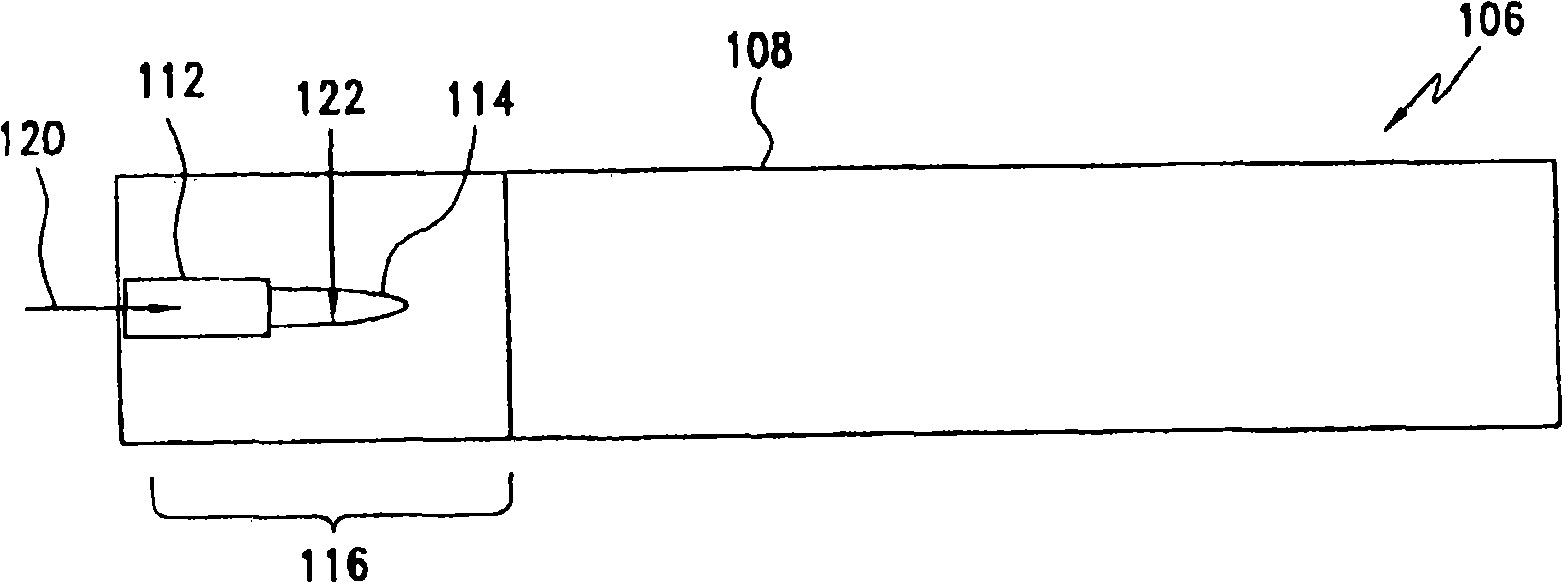Metal-containing nanoparticles, their synthesis and use
A technology of metal alloys and particles, which is applied in the field of metal-containing nanoparticles, its synthesis and application, and can solve the problems of poor crystallization of metal cores, limitations, time-consuming scale, etc.
- Summary
- Abstract
- Description
- Claims
- Application Information
AI Technical Summary
Problems solved by technology
Method used
Image
Examples
Embodiment 1-8
[0116] Silver neodecanoate and hexamethyldisiloxane (HMDS) were premixed in toluene in different amounts to make various Ag / SiO with between 5 / 95 and 98 / 2 2 Test solutions by weight ratio (see Table 1 below). Each solution was dispersed in an oxygen dispersing gas flowing at 40 slpm and supplied to the laboratory at a rate of 10 ml / min Figure 4-6 The reactor shown in is similar to the flame jet reactor. The ignition source for the reactor was a pilot flame fueled by methane fed at 2 slpm and oxygen fed at 4 slpm, while the fuel for the burner was provided by precursors (silver neodecanoate and hexamethyldisiloxane) and toluene carrier . Additionally, the reactor included an oxygen jacket provided at 200 slpm and an oxygen quench medium provided at 900 slpm. Nozzle tip diameter ( Figure 4 δ) in is 0.5mm.
[0117] The resulting product was collected on a baghouse filter and analyzed using transmission electron microscopy (TEM), scanning transmission electron microscopy (S...
Embodiment 9
[0129] Ag:SiO was fabricated using the same steps as in Examples 1-8 above 2 Granules in weight ratios of 90:10, 98:2, 99:1 and 99.5:0.5. The first three materials (90:10, 98:2, 99:1 ) were readily dispersible in water and QEL's measurements showed an average particle size of ~100 nm. However, the 99.5:0.5 material was not readily dispersible and QELS measurements showed the presence of particles larger than 100 microns as well as particle populations around 100 nm. This implies that some of the silver grains produced by this method are covered by SiO 2 coated, which prevents their aggregation. However, other Ag particles are not sufficiently (or not at all) coated with SiO 2 , which causes them to aggregate or agglomerate into larger particles that settle rapidly when dispersed. Figure 20(a) and (b) show TEM images of the 99.5:0.5 material—some particles appear to be coated with very thin SiO 2 layers while others are fused together.
Embodiment 10
[0130] Embodiment 10 (comparison)
[0131] The following examples describe two metal / metal oxide material systems that did not result in coated metal particles. Silver neodecanoate and zinc ethylhexanoate precursors were premixed in toluene in different amounts to make test solutions with various Ag / ZnO weight ratios between 90 / 10 and 95 / 5. Each solution was dispersed in an oxygen dispersing gas flowing at 40 slpm and supplied to the laboratory at a rate of 10 ml / min Figure 4-6 The reactor shown in is similar to the flame jet reactor. The ignition source for the reactor was a pilot flame fueled by methane fed at 2 slpm and oxygen fed at 4 slpm, while the fuel for the burner was provided by precursors (silver neodecanoate and zinc ethylhexanoate) and toluene carrier. Additionally, the reactor included an oxygen jacket provided at 200 slpm and an oxygen quench medium provided at 900 slpm. The nozzle tip diameter is 0.5 mm.
[0132] The resulting product was collected on a b...
PUM
| Property | Measurement | Unit |
|---|---|---|
| crystal size | aaaaa | aaaaa |
| particle size | aaaaa | aaaaa |
| particle size | aaaaa | aaaaa |
Abstract
Description
Claims
Application Information
 Login to View More
Login to View More - R&D
- Intellectual Property
- Life Sciences
- Materials
- Tech Scout
- Unparalleled Data Quality
- Higher Quality Content
- 60% Fewer Hallucinations
Browse by: Latest US Patents, China's latest patents, Technical Efficacy Thesaurus, Application Domain, Technology Topic, Popular Technical Reports.
© 2025 PatSnap. All rights reserved.Legal|Privacy policy|Modern Slavery Act Transparency Statement|Sitemap|About US| Contact US: help@patsnap.com



